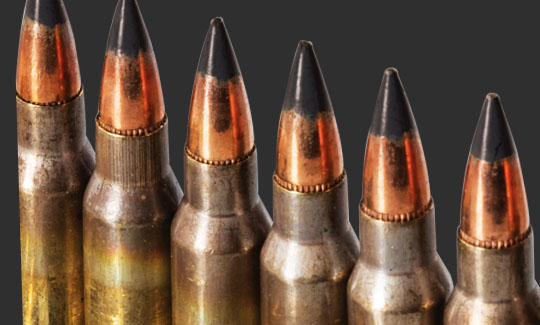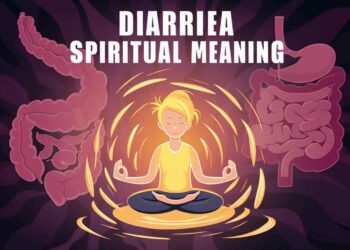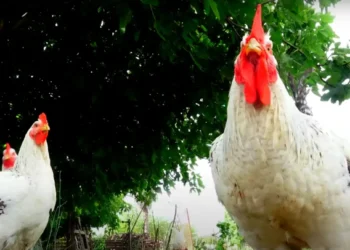1. The history of bullet symbolism
Bullet symbolism has been used for centuries to represent a variety of concepts, including power, violence, and death. In ancient times, bullets were often used as talismans or amulets to protect warriors in battle. The use of bullets as symbols continued through the Middle Ages and into the Renaissance period, where they were often depicted in artwork and heraldry.
During the 19th century, the development of firearms led to a new era of bullet symbolism. Bullets became associated with power and domination, particularly in military contexts. They were also seen as a symbol of progress and technological advancement. However, as firearms became more common and deadly, bullets also came to represent violence and death.
The Bullet Necklace
One example of bullet symbolism from history is the bullet necklace. In many cultures around the world, necklaces made from spent bullet casings are worn as a symbol of protection or good luck. This tradition dates back to at least the mid-1800s, when soldiers returning from wars in Africa brought back bullet necklaces as souvenirs.
The American West
In the American West during the late 1800s, bullets became an important symbol of lawlessness and violence. Gunslingers like Billy the Kid and Jesse James were often depicted with guns and bullets in popular media like dime novels and newspapers.
Key Takeaways:
- Bullet symbolism has been used for centuries to represent power, violence, death, protection or good luck depending on culture
- Bullets became associated with power and domination during 19th century military contexts
- Bullet necklaces are worn by many cultures around the world for protection or good luck
- In the American West, bullets were associated with lawlessness and violence
2. The cultural significance of bullet symbolism
The historical roots of bullet symbolism
Bullet symbolism has a long and complex history in human culture. In many ancient societies, the bullet was seen as a symbol of power and strength, often associated with warriors and hunters. For example, Native American tribes used bullets made from stone or bone for hunting and warfare, and these objects were often decorated with intricate designs that conveyed spiritual meaning.
In more recent times, the bullet has become a potent symbol of violence and death. This shift in cultural meaning can be traced back to the rise of firearms in the early modern period, which made bullets more deadly and destructive than ever before. As guns became more widespread, so too did the use of bullets as symbols of fear, aggression, and power.
Contemporary interpretations of bullet symbolism
Today, bullet symbolism remains a powerful force in popular culture. From music videos to fashion photography to political propaganda, bullets are used to convey a range of meanings and emotions. Some people see bullets as symbols of rebellion or resistance against authority; others view them as icons of danger or fear.
One particularly interesting aspect of contemporary bullet symbolism is its connection to hip-hop culture. Many rappers use images of guns and bullets in their lyrics and album art, often as a way to express their own experiences with violence or poverty. While some critics argue that this kind of imagery glorifies gun violence, others see it as an important form of social commentary that sheds light on the harsh realities faced by many young people today.
3. The use of bullet symbolism in literature
Bullet imagery in war novels
The use of bullet imagery is common in literature about war and conflict. In books like All Quiet on the Western Front by Erich Maria Remarque or The Things They Carried by Tim O’Brien, bullets are often used as a symbol of the randomness and senselessness of violence. Characters in these novels are frequently killed or wounded by bullets that seem to come out of nowhere, highlighting the chaos and confusion of war.
In other works, bullets are used to represent power and control. For example, in The Great Gatsby by F. Scott Fitzgerald, the character Tom Buchanan is described as carrying “a great pack of muscle” and a “revolver in his pocket.” This imagery suggests that Tom is a dangerous and unpredictable figure who uses his physical strength and access to weapons to maintain his dominance over others.
Bullet symbolism in crime fiction
Bullet imagery is also commonly found in crime fiction, where it is often used to create suspense or convey a sense of danger. In books like The Godfather by Mario Puzo or The Silence of the Lambs by Thomas Harris, guns and bullets play a central role in the plot, with characters using firearms to commit crimes or defend themselves against attackers.
One interesting aspect of bullet symbolism in crime fiction is its connection to gender roles. Many male characters in these novels are depicted as tough-talking gunmen who use their guns to assert their masculinity; female characters, on the other hand, are often portrayed as victims who are powerless against male aggression. This gendered dynamic has been criticized by some feminist scholars for perpetuating harmful stereotypes about women and men.
4. The role of bullet symbolism in film and television
Bullet symbolism has played a significant role in the film and television industry for decades. Bullets are often used as a visual representation of danger, violence, and power. In action movies, bullets are frequently shown flying through the air in slow motion or ricocheting off surfaces to create a sense of excitement and danger.
Additionally, bullet symbolism can be used to convey deeper meanings within a story. For example, in the movie “The Matrix,” the use of slow-motion bullet time sequences is not just meant to showcase cool special effects but also symbolizes the characters’ ability to manipulate reality itself.
Overall, bullet symbolism is an effective tool for filmmakers and television producers to create tension, convey meaning, and add visual interest to their work.
Examples of Bullet Symbolism in Film and Television
– In the movie “Pulp Fiction,” bullets are used as a metaphor for fate. Characters who are destined to die have bullets fired at them from out of nowhere.
– The opening sequence of “Saving Private Ryan” features slow-motion shots of bullets tearing through water as soldiers storm Normandy beach. This creates a visceral sense of danger for viewers.
– The iconic scene from “The Good, The Bad, and The Ugly” where Clint Eastwood’s character shoots down three bandits with one bullet is an example of how bullets can be used to showcase skill and power.
The Impact of Bullet Symbolism on Society
While bullet symbolism can be entertaining when used responsibly in film and television, it’s important to recognize that it can also have real-world consequences. Studies have shown that exposure to violent media can lead to increased aggression in children and young adults.
Furthermore, some argue that the glorification of guns and bullets in popular culture can contribute to a culture of violence and gun-related deaths. It’s important for media producers to be mindful of the messages they’re sending with their use of bullet symbolism.
5. The political implications of bullet symbolism
Bullet symbolism has been used in politics for centuries as a way to convey power, aggression, and control. In some cases, bullets are used as a symbol of resistance against oppressive regimes or governments.
For example, during the American Revolution, the phrase “Don’t Tread on Me” was accompanied by an image of a coiled rattlesnake ready to strike. This symbolized the colonists’ willingness to fight for their freedom and resist British rule.
In more recent times, bullet symbolism has been used by political groups on both sides of the spectrum. The National Rifle Association (NRA) uses bullets as part of its logo and messaging to promote gun ownership rights. On the other hand, anti-gun groups often use images of bullets or guns crossed out to symbolize their opposition to firearms.
The Use of Bullet Symbolism in Propaganda
Bullet symbolism is often used in propaganda as a way to dehumanize enemies and justify violence. During World War II, Nazi propaganda depicted Allied soldiers as bloodthirsty monsters who were only interested in killing German civilians.
Similarly, during conflicts in the Middle East, Western media often portrays Muslim extremists as violent fanatics who are willing to kill innocent civilians without remorse. These depictions can have real-world consequences and contribute to negative stereotypes about certain groups of people.
The Role of Bullet Symbolism in Political Activism
In addition to being used by political organizations and governments, bullet symbolism is also utilized by activists fighting for social justice or political change. For example, after the Parkland school shooting in 2018, students across the United States began wearing bulletproof vests to school as a way to protest gun violence and demand stricter gun control laws.
Overall, bullet symbolism plays a significant role in politics and can be used to convey both positive and negative messages depending on the context. It’s important for individuals to be mindful of the impact their use of bullet symbolism can have on others.
6. Bullet symbolism as a metaphor for violence
Bullets are often used as a metaphor for violence in literature, art, and film. The image of a bullet tearing through flesh or shattering glass is a powerful symbol of destruction and chaos.
In some cases, bullets are used as a way to explore the psychological effects of violence on individuals and society as a whole. For example, the novel “The Catcher in the Rye” uses bullets as a recurring motif to symbolize Holden Caulfield’s feelings of alienation and anger towards society.
Additionally, bullet symbolism can be used to critique societal attitudes towards violence. In his painting “Guernica,” Pablo Picasso uses images of shattered bodies and broken weapons to condemn the horrors of war and human suffering.
The Use of Bullet Symbolism in Music
Bullet symbolism is also prevalent in music, particularly in genres like hip-hop and punk rock that often deal with themes of violence and rebellion. In Public Enemy’s song “Fight the Power,” for example, bullets are used as a metaphor for resistance against oppressive systems.
Similarly, punk band Dead Kennedys’ song “Holiday in Cambodia” features lyrics about being shot by soldiers while on vacation. This serves as both a critique of American consumer culture and an indictment of U.S. involvement in foreign conflicts.
The Psychological Impact of Bullet Symbolism
While bullet symbolism can be an effective way to explore complex themes like violence and power, it’s important to recognize that it can also have a psychological impact on viewers. Studies have shown that exposure to violent media can lead to increased aggression and desensitization to violence.
Furthermore, the constant barrage of violent imagery in popular culture can contribute to a culture of fear and paranoia. It’s important for individuals to be mindful of the messages they’re consuming and how those messages may be impacting their mental health.
7. The connection between guns and bullet symbolism
Guns and bullets are inherently linked, as one cannot exist without the other. In popular culture, guns are often seen as symbols of power, masculinity, and violence. Bullets, on the other hand, are used as a visual representation of danger and destruction.
Additionally, the use of guns and bullets in media can have real-world consequences when it comes to gun ownership laws and policies. For example, after mass shootings like Sandy Hook or Parkland, there is often a public debate about whether or not stricter gun control laws are necessary.
The Symbolism of Different Types of Guns
Different types of guns are often associated with different meanings in popular culture. For example, handguns are typically seen as symbols of personal protection or self-defense while assault rifles are associated with military power and aggression.
Similarly, certain brands or models of guns can carry specific connotations depending on their history or cultural significance. The Colt.45 revolver used by cowboys in the Wild West is often seen as a symbol of American individualism while the AK-47 rifle is associated with communist regimes and anti-Western sentiment.
The Impact of Gun Culture on Bullet Symbolism
America’s unique relationship with guns has had a significant impact on how bullet symbolism is perceived both domestically and abroad. In countries where gun ownership is heavily restricted like Japan or Australia, images of guns and bullets in media may be seen as more shocking or disturbing.
Additionally, the prevalence of gun violence in the United States has led to a culture of fear and paranoia surrounding guns and bullets. This can be seen in the popularity of bulletproof vests and other forms of protective gear as well as in the public debate over gun control laws.
8. Bullet symbolism in art and photography
Bullet symbolism has been used by artists and photographers for decades as a way to explore themes like violence, power, and destruction. In some cases, bullets are used as a literal medium for creating art while in others they serve as a visual symbol or metaphor.
For example, artist Chris Burden famously created a piece called “Shoot” where he had himself shot with a.22 caliber rifle as part of a performance art piece. The use of real bullets was meant to shock viewers and raise questions about violence, pain, and suffering.
Similarly, photographer Richard Mosse’s series “Infra” features images taken with infrared film that highlight the devastation caused by conflict in the Congo. The use of infrared film creates an eerie pink hue that serves as a powerful symbol of violence and destruction.
The Use of Bullet Symbolism in Street Art
Bullet symbolism is also prevalent in street art, particularly among artists who are using their work to comment on social or political issues. Banksy’s famous stencil “Bulletproof David” features an image of Michelangelo’s statue David wearing a bulletproof vest.
This serves as both a critique of modern society’s obsession with violence and an indictment of government policies that prioritize military spending over social welfare programs.
The Impact of Technology on Bullet Symbolism
Advances in technology have allowed artists and photographers to explore new ways of using bullet symbolism. For example, 3D printing technology has made it possible to create intricate sculptures and models of bullets that can be used in art installations or as part of multimedia projects.
Additionally, the rise of social media has allowed artists to share their work with a wider audience than ever before. This has led to an increase in the visibility of bullet symbolism in contemporary art and photography.
9. Religious interpretations of bullet symbolism
Bullet symbolism is not limited to secular culture but can also be found in religious texts and iconography. In some cases, bullets are used as a way to explore themes like faith, redemption, and martyrdom.
For example, in Christianity, the image of a bullet-riddled saint or crucifixion scene can serve as a powerful symbol of sacrifice and suffering. Similarly, in Islam, images of bullets or guns may be used as part of propaganda by extremist groups who believe they are fighting for their faith.
The Use of Bullet Symbolism in Religious Art
Bullet symbolism has been used by artists throughout history to create religious works that explore themes like violence and redemption. The painting “The Martyrdom of Saint Sebastian” by Antonio Pollaiuolo features an image of Saint Sebastian pierced with arrows.
This serves as both a symbol of his martyrdom and a reminder that suffering is often necessary for spiritual growth or enlightenment.
The Role of Religion in Gun Culture
America’s unique relationship with guns is often tied to religious beliefs about individual rights and self-defense. Some Christian denominations view gun ownership as a way to protect themselves from evil while others believe it’s their duty to own firearms as part of their faith.
Additionally, certain extremist groups use religious rhetoric to justify violent acts committed with guns or other weapons. It’s important for individuals to recognize the complex interplay between religion, gun culture, and bullet symbolism when exploring these topics.
10. Psychological analysis of the meaning behind bullet symbolism
Bullet symbolism can have a deep psychological impact on viewers, often evoking feelings of fear, anxiety, or excitement. In some cases, the use of bullet symbolism may be intentional on the part of the artist or filmmaker while in others it may be subconscious.
From a psychological perspective, bullets are often associated with themes like power, aggression, and danger. The sound of gunfire can trigger fight-or-flight responses in individuals and create a sense of panic or chaos.
The Use of Bullet Symbolism in Horror Movies
Horror movies often use bullet symbolism as a way to create tension and scare viewers. The sound of gunshots echoing through a dark hallway or the sight of a bullet hole in a window can be enough to make audiences jump out of their seats.
Additionally, horror movies that deal with themes like revenge or vigilante justice may use bullets as part of their narrative arc. For example, in “The Crow,” the main character seeks revenge against his killers using guns and other weapons.
The Psychological Impact of Gun Violence
Exposure to gun violence can have serious psychological consequences for individuals who witness or experience it firsthand. Studies have shown that children who are exposed to gun violence are more likely to suffer from anxiety, depression, and post-traumatic stress disorder (PTSD).
Furthermore, constant exposure to images of guns and bullets in popular culture can contribute to desensitization towards violence and an acceptance of gun-related deaths as inevitable. It’s important for individuals to recognize the impact that their consumption of media may be having on their mental health.
11. Gendered meanings of bullet symbolism
Bullet symbolism is often gendered in popular culture with guns and bullets being associated with masculinity and power while femininity is associated with vulnerability and weakness. This can be seen in movies, television shows, and advertising where men are often portrayed as the ones who carry guns and engage in violent behavior.
Additionally, women are often depicted as victims of gun violence rather than perpetrators. This reinforces harmful stereotypes about gender roles and perpetuates a culture of violence against women.
The Use of Bullet Symbolism in Feminist Art
Some feminist artists have used bullet symbolism to challenge traditional gender roles and critique societal attitudes towards violence against women. In her piece “Untitled (Your Body is a Battleground),” artist Barbara Kruger superimposes an image of a woman’s face over an image of a target with crosshairs.
This serves as both a critique of the objectification of women’s bodies and a call to action for women to take control over their own lives and bodies.
The Impact of Gun Violence on Women
Women are disproportionately affected by gun violence, particularly in cases of domestic abuse or sexual assault. Studies have shown that access to firearms increases the risk of intimate partner homicide by five times for women.
Furthermore, the constant barrage of images depicting men using guns to assert their dominance can contribute to a culture where violence against women is normalized or even celebrated. It’s important for individuals to recognize the impact that gendered meanings of bullet symbolism can have on society as a whole.
12. Bullet symbolism in war and conflict
Bullets are often associated with war and conflict, serving
In conclusion, bullet symbolism is a powerful tool used in literature and art to convey various themes and messages. It can represent violence, power, death, and the fragility of life. The use of bullet symbolism adds depth and complexity to creative works, allowing readers and viewers to interpret them in different ways.






